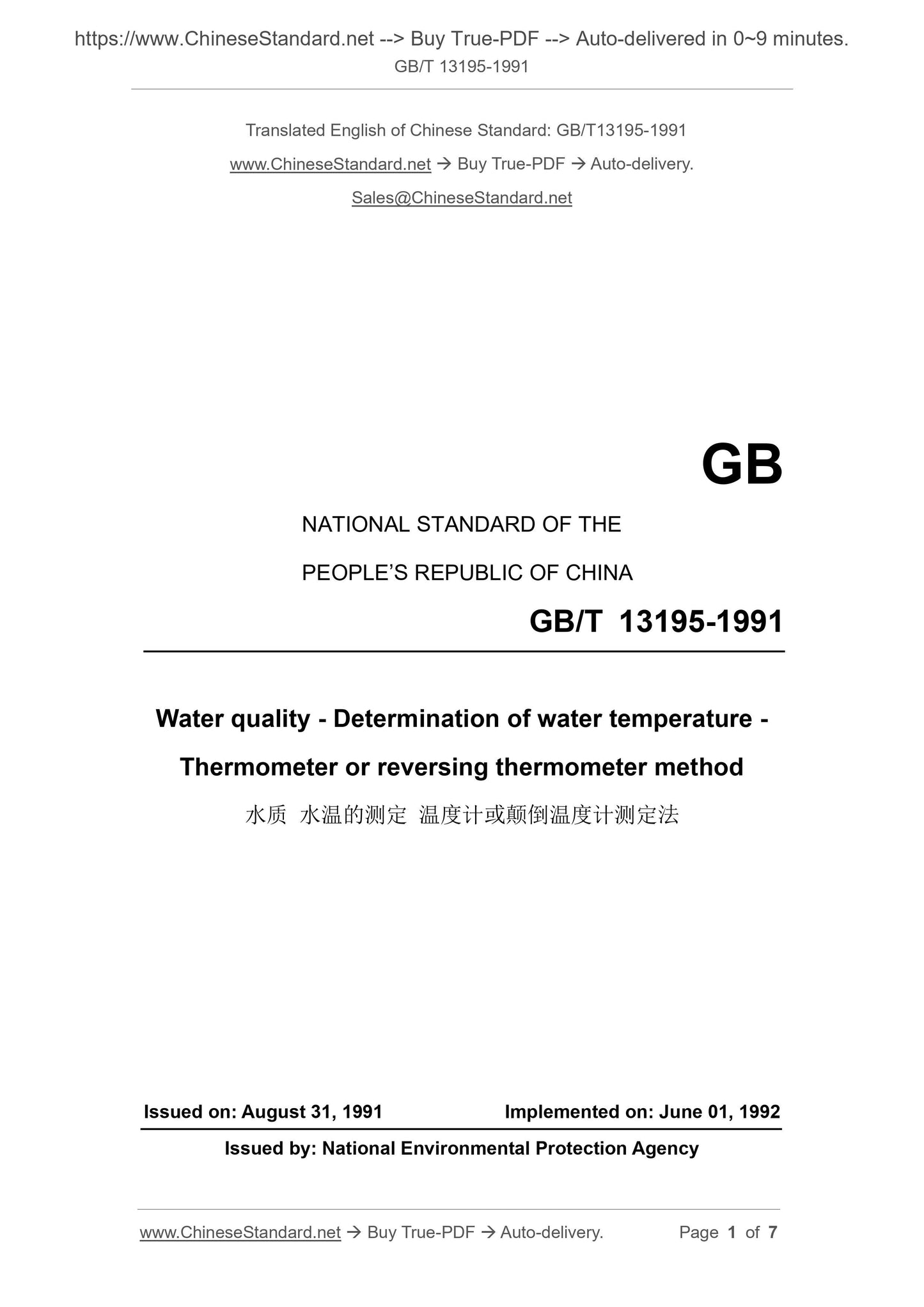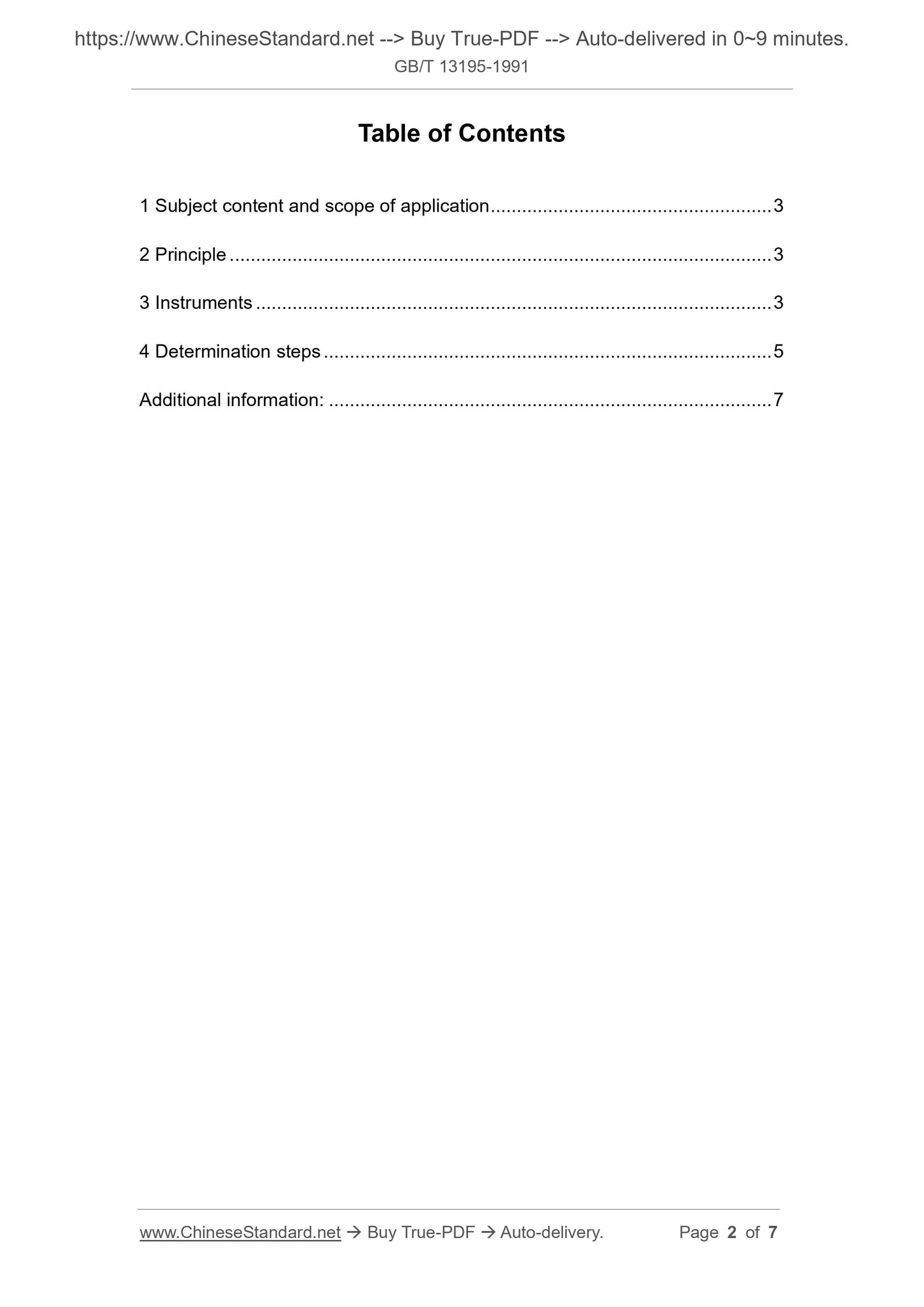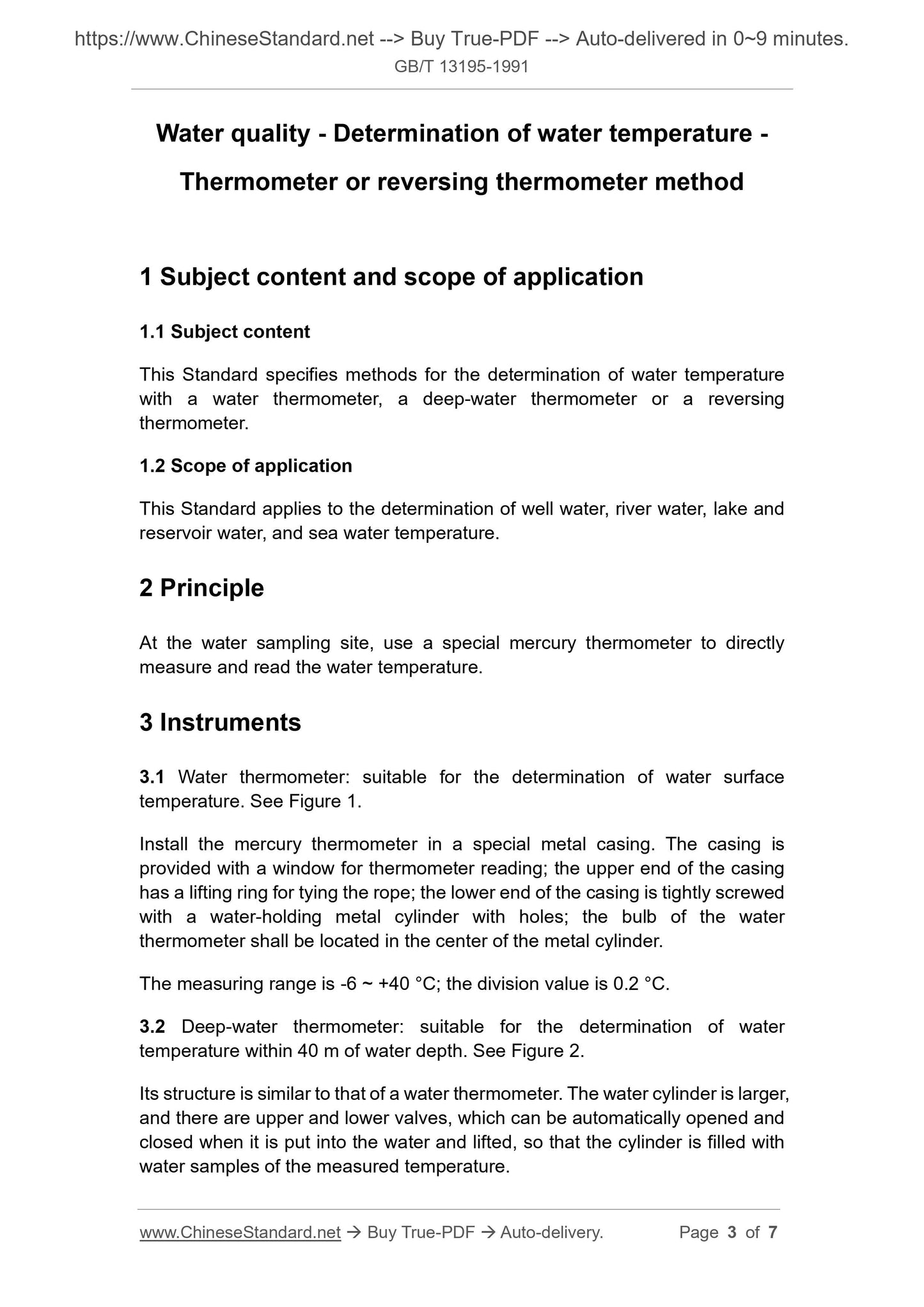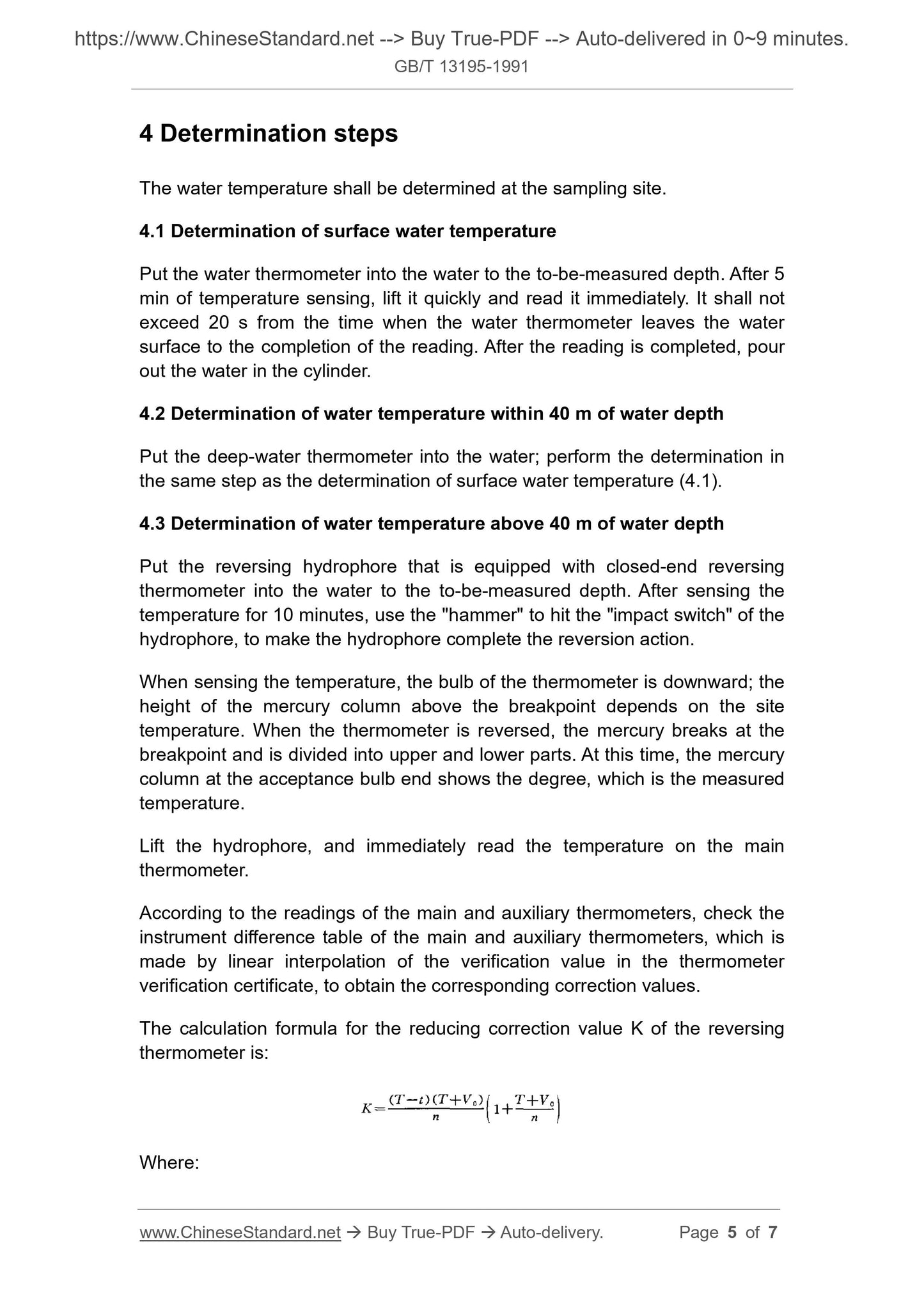1
/
of
4
www.ChineseStandard.us -- Field Test Asia Pte. Ltd.
GB/T 13195-1991 English PDF (GB/T13195-1991)
GB/T 13195-1991 English PDF (GB/T13195-1991)
Regular price
$110.00
Regular price
Sale price
$110.00
Unit price
/
per
Shipping calculated at checkout.
Couldn't load pickup availability
GB/T 13195-1991: Water quality. Determination of water temperature. Thermometer or reversing thermometer method
Delivery: 9 seconds. Download (and Email) true-PDF + Invoice.Get Quotation: Click GB/T 13195-1991 (Self-service in 1-minute)
Newer / historical versions: GB/T 13195-1991
Preview True-PDF
Scope
1.1 Subject contentThis Standard specifies methods for the determination of water temperature
with a water thermometer, a deep-water thermometer or a reversing
thermometer.
1.2 Scope of application
This Standard applies to the determination of well water, river water, lake and
reservoir water, and sea water temperature.
Basic Data
| Standard ID | GB/T 13195-1991 (GB/T13195-1991) |
| Description (Translated English) | Water quality. Determination of water temperature. Thermometer or reversing thermometer method |
| Sector / Industry | National Standard (Recommended) |
| Classification of Chinese Standard | Z16 |
| Classification of International Standard | 13.060 |
| Word Count Estimation | 4,499 |
| Date of Issue | 8/31/1991 |
| Date of Implementation | 6/1/1992 |
| Issuing agency(ies) | State Bureau of Technical Supervision, State Environmental Protection Administration |
| Summary | This standard specifies the method to use water meter deep water temperature or reversing thermometer to measure water temperature. This standard applies to well water, river water, lake and reservoir water, and the water temperature was measured. |
Share







